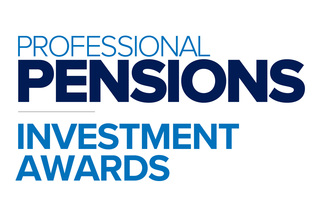The risk/return profile of the Bloomberg Barclays US HY Fallen Angel 3% Cap Index (fallen angels) has been impressive relative to the broad high yield universe and other major asset classes. In our view, the key advantage of a dedicated fallen angel strategy is the potential to earn true structural alpha by exploiting the oversold prices that occur after investment grade bonds are downgraded to high yield.
Mellon believe this year will be an auspicious entry point for a fallen angel allocation due to the effects of the severe economic downturn and US credit market dislocations. Some key driving factors in 2020 include:
● Potentially record downgrades increases opportunity set
● Option-adjusted spreads (OAS) are wide
● The Federal Reserve's bond-buying program now includes fallen angels
DOWNGRADE ACTIVITY IN 2020 LIKELY TO DWARF PRIOR YEARS
After several years of modest fallen angel creation, corporate debt downgrades have begun to accelerate. Even prior to the economic dislocations caused by the COVID-19 pandemic, downgrades were expected to grow. Against a backdrop of extremely volatile economic activity, however, many issuers' ability to keep their investment grade rating appears in jeopardy. $150 billion of bonds have already entered the fallen angel universe in 2020, a figure that exceeds all calendar years since the 2005 inception of the Bloomberg Barclays US HY Fallen Angel 3% Cap Index. Our review of rating agency metrics suggests potential for another $500 billion in downgrades.
An increase in downgrades helps to augment the structural inefficiencies embedded in the market in two ways. First, the supply/demand imbalance for new fallen angels should lead to greater price distortions. In our view, forced selling by investment grade managers, combined with the high yield market's inability to digest the new supply, will drive new fallen angel prices further below their fundamental value, offering investors the opportunity to realize higher alpha when equilibrium is restored. Second, the increased supply creates a larger opportunity set, allowing for a more diversified portfolio with the potential for improved risk/ return profile.
WIDE OAS SPREADS The OAS of corporate bonds over Treasuries is frequently used to measure the expected excess return above Treasuries in order to justify additional risk. It is a common measurement of investors' risk appetite. Like many risk assets, fallen angel prices fell sharply during March as the COVID-19 pandemic resulted in severe downward revisions to 2020 global growth forecasts and dramatically lower corporate earnings forecasts. OAS spreads reached 955 basis points at the end of March, a level not seen since the Global Financial Crisis. Though spreads have narrowed somewhat since, they remain firmly above their average of 493 basis points sincethe fallen angel index began in 2005.
FEDERAL RESERVE SUPPORT On April 9, the Federal Reserve (Fed) announced plans to expand its bond-buying program to include recent fallen angel bonds - in the primary and secondary markets - and high yield exchange-traded funds (ETFs). The decision augmented the Secondary Market Corporate Credit Facility that was created to provide liquidity in the investment grade market. The expansion into high yield includes many high-profile companies that were investment grade as of 22 March -and have subsequently become fallen angels (as long as they are still rated BB-/Ba3 or better). In our view, the Fed's foray into high yield in general and fallen angels in particular should provide a number of benefits. At a high level, purchasing ETFs will provide positive sentiment for valuations and liquidity across the broader high yield market and specifically in the fallen angel sector. By pledging to purchase bonds in both the primary and secondary markets, the Fed is playing a market-making role by supporting the ability of borrowers to raise cash.
A SILVER LINING Capturing structural alpha is attractive in normal markets, but the near-term environment will be anything but normal. However, we believe the ramifications from the COVID-19 pandemic will benefit the fallen angel universe. The likelihood of a record year for downgrades, attractive valuations, and explicit support from the Fed increase the potential for generating attractive total and risk-adjusted returns.
Important information
For Professional Clients only. This is a financial promotion and is not investment advice. Any views and opinions are those of the investment manager, unless otherwise noted. This is not investment research or a research recommendation for regulatory purposes. For further information visit the BNY Mellon Investment Management website www.bnymellonim.com







